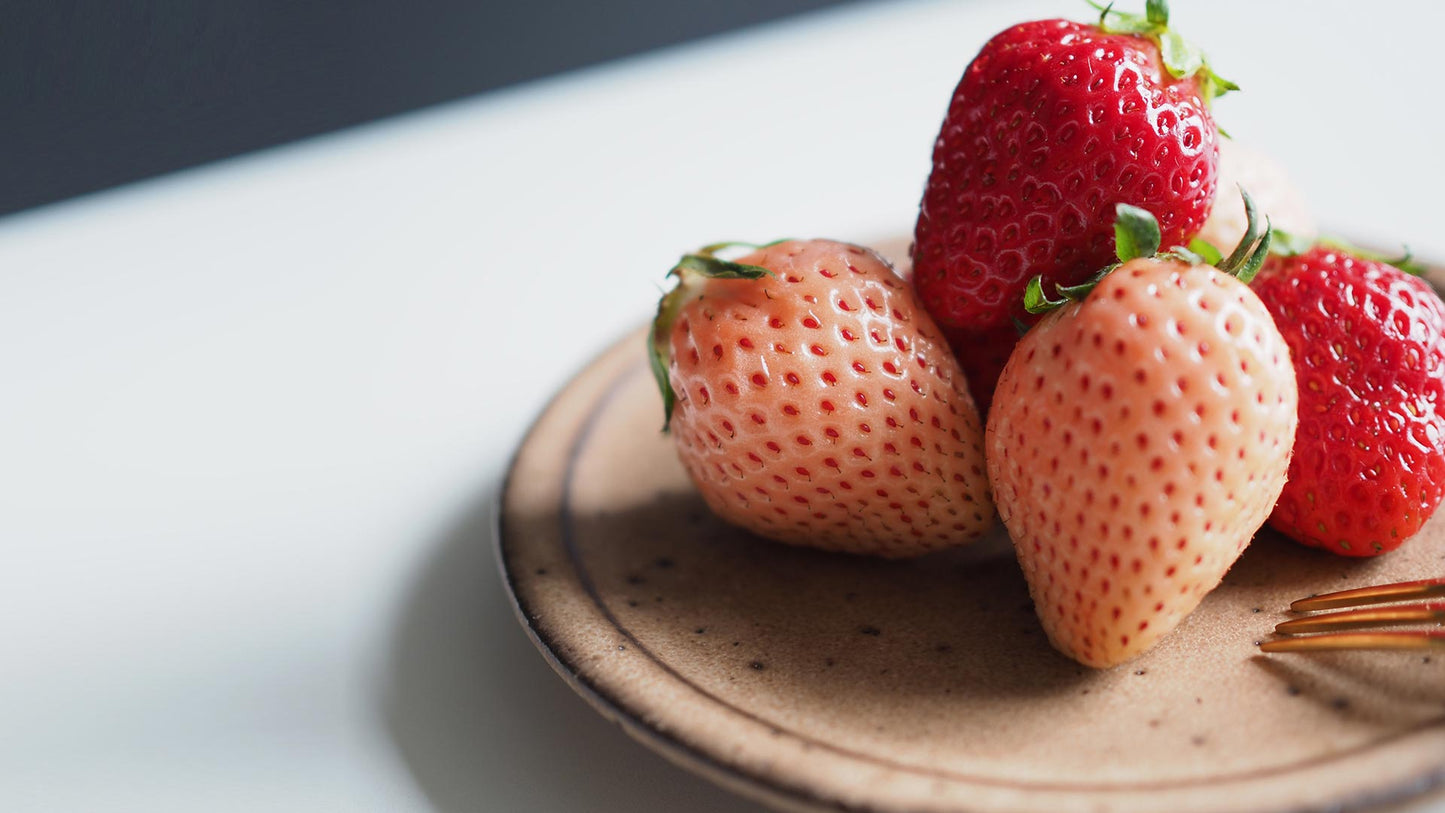
For many in the U.S., strawberries are synonymous with warm spring/summer days spent with friends and family, picking fresh fruits from the strawberry fields. This classic spring/summertime activity is eagerly anticipated each year in America. But what if we told you that in Japan, strawberries are celebrated at a completely different time of year?
In fact, you can find most Japanese people enjoying their strawberries in the chilly winter months, starting their strawberry season with the holidays.
In this article, we’ll answer some questions about Japanese strawberries and introduce you to the perfect varieties of Japanese strawberries for anyone looking to experience these unique delicacies for themselves.
Why Are Strawberries Considered Winter Fruits in Japan?
Japanese strawberries are famous around the world for their aroma, their sweetness, and their quality. What surprises most people is that they’re mostly consumed in the wintertime in Japan.
A trip to Japan in the cold winter months can feel jarring when there are ads everywhere for plump, ripe, red strawberries plastered outside of every bakery, convenience store, and department store. Usually, these fruits are the favorite ingredients in most Christmas cakes and other goodies often enjoyed at this time of year. The vibrant red of the fruits is a stark contrast to the dreary scenery of a chilly winter.

So how did these spring/summer treats become winter delicacies in Japan?
The Rise of the Japanese Christmas Cake
Although Christianity has never been a dominant religion in Japan, you can find millions of Japanese people celebrating the Christmas season every year. One of the most popular traditions? Eating a cake on Christmas Eve.
Originally started by a famous pastry shop called Fujiya in 1910, Japan has fallen in love with the yearly eating of a Western-style cake on December 24th each year.1 The first version of Fujiya’s Christmas cake was a brown fruit cake soaked in liqueur. Unfortunately, the bakers were concerned the brownish appearance wasn’t enticing enough for customers.2 The solution? Snow-white frosting.
By the 1950s, the strawberry shortcake was invented overseas and eventually adopted as the quintessential cake for this Christmas tradition. Eventually, strawberries became popular toppings and fillings, their brilliant red standing out against the white (it doesn’t hurt that white and red are the colors of the Japanese flag, either).
Now, a walk through any shopping district during the early winter months is full of advertising for the most delectable strawberry shortcakes you’ve ever seen, with cloud-like sponge cake and vibrant red fruits grown in the finest greenhouses in the country. Once upon a time, these Western delicacies were reserved for those who could afford imported goods. Nowadays, it’s easy to buy your own Christmas cake from the local convenience store.
The demand for strawberries on Christmas cakes has no doubt fueled the shift in strawberries from a spring/summer fruit to a winter fruit in Japanese culture.
How Do Japan’s Farmers Grow Strawberries in Winter?
One of the reasons Japan can enjoy strawberries during winter is because of the advanced farming methods. Many farmers grow strawberries in temperature-controlled greenhouses, which help keep the plants warm even when it’s cold outside. This allows them to harvest ripe, sweet strawberries starting in December, long before strawberries are available in many other parts of the world.
The BERRY Farm: Cultivating Strawberries and Second Chances
Beyond producing some of the most premium strawberries on the market today, one farm has combined their mission to grow luxury fruit with bringing meaning to the lives of people society has let down.
Nestled in the fields of Iga in Mie Prefecture, you’ll find the BERRY farm. Once a plot of land deemed a “nuisance” by the local townsfolk, this farm has transformed this location from an eyesore into a flourishing community filled with people seizing their second chance at life.
BERRY was founded by 3 individuals looking to bring goodness into the world. A compassionate social welfare agent, a brilliant marketer, and a master strawberry farmer combined their expertise to create a farm where cultivating premium fruit is the driver to cultivating human character.

Each employee carries a story with them, one of mistakes, hardships, and neglect. But BERRY hands its workers a clean slate, and supplies them with the tools to restore their love for life each and every day. Once perhaps lost in life, these farmers are on a path to redemption as they gain hard skills learning the strawberry farming trade. This includes cultivating, inspecting, and even adjusting the angle of the leaves and branches to ensure the most delicious crop yield.
Watch the BERRY farm interview here:
Strawberries produced on this farm come in a variety of sweetnesses, acidities, and even colors. The Awayuki (“light snow”) variety enchants the senses from its delicate pink appearance to its bewitchingly sweet aroma. The Yotsuboshi variety is so meticulously balanced in its sweetness, acidity, and juice content that it lives up to its “4 stars” name in every bite. The juicy red Benihoppe (“crimson cheek”) variety is a striking red with sharp sweet notes perfect for the classic strawberry lover. The newly developed Berry Pop Suzu variety is a vibrant red with just the right firmness, unleashing an exquisite symphony of sweet and tart notes in every bite. Carefully grown in Japan, this next-level Japanese strawberry promises exceptional taste and quality.
Every farm has its own method of producing these modern-day culinary treasures that have taken the culinary world by storm. The BERRY Farm is a leader in the power of human ingenuity, compassion, and creativity.
If you’ve never had fresh strawberries in winter, this is your chance to experience the best of the best. Japanese gourmet strawberries are at their juiciest around this time, meaning the time to scoop yours up before they’re gone is now! Check out the different strawberry varieties on Ikigai Fruits here.
